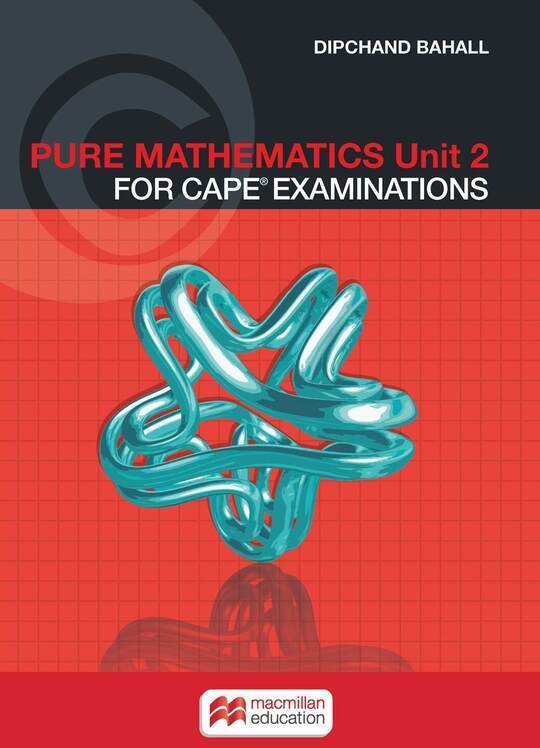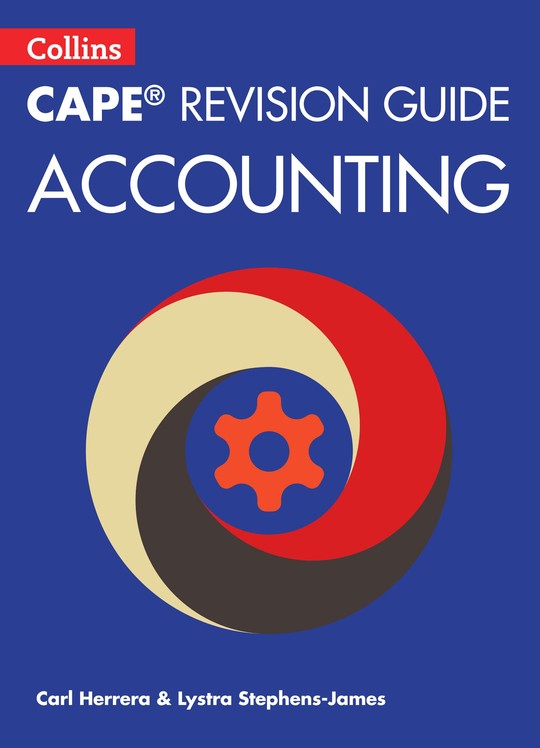
Chemistry for CAPE® Examinations
US$ 34.32
The publisher has enabled DRM protection, which means that you need to use the BookFusion iOS, Android or Web app to read this eBook. This eBook cannot be used outside of the BookFusion platform.
Description
Contents
Reviews
Language
English
ISBN
9780230483156
Cover
Half Title
Title Page
Copyright
Contents
Preface
UNIT 1 Chemical principles and applications I
Module 1 Fundamentals in chemistry
Chapter 1 Atomic structure
The atom: introduction
Early ideas about the atom: classical models
Atomic structure
Electrons in atoms
Summary
Review questions
Answers to ITQs
Answers to Review questions
Chapter 2 The quantum atom and the periodic table
The quantum atom
Developing the periodic table
The modern periodic table
Periodicity
Periodic properties in atomic ‘size’
Summary of general periodic trends
Summary
Review questions
Answers to ITQs
Answers to Review questions
Chapter 3 Radioactivity
Introduction: the alchemists’ dream
Nuclear transitions
Radioactive decay
Properties of α, ß and γ rays
Problems caused by radiation
Uses of radioisotopes
Summary
Review questions
Answers to ITQs
Chapter 4 Chemical bonding
Introduction
Formation of bonds
Types of chemical bond
Bond formation and energy changes
Ionic bonding
Covalent bonding
The hydrogen bond
The metallic bond
van der Waals forces
The periodic table and bond type
Properties associated with different bond types
Mixed bonds
Summary
Review questions
Answers to ITQs
Chapter 5 Shapes of covalent molecules
Lewis structures
Molecular geometry
Hybrid orbitals
Resonance
Molecular polarity
Two common misconceptions
Summary
Review questions
Answers to ITQs
Answers to Review questions
Chapter 6 An introduction to the mole
Relative atomic mass of elements, Ar
Relative formula mass and relative molecular mass of compounds
The mole
Molar mass
Writing chemical equations
Calculations involving the mole
The concept of the limiting reagent
Empirical and molecular formulae
The mole concept applied to solutions
Titrimetric (volumetric) analysis
The mole concept applied to gases
Summary
Review questions
Answers to ITQs
Answers to Review questions
Chapter 7 Gases
Behaviour of gases
Gas laws
Behaviour of real gases
Kinetic-molecular theory
Summary
Review questions
Answers to Review questions
Chapter 8 Thermochemistry
Introduction to thermodynamics
Heat and heat capacity
Latent heat
Heat and the kinetic-molecular theory
Heat and work
The first law of thermodynamics
Calorimetry
Enthalpy
Summary
Review questions
Answers to ITQs
Answers to Review questions
Module 2 Kinetics and equilibria
Chapter 9 Chemical kinetics
Collision theory
Reaction rate
Determining the order of reaction
Summary
Review questions
Answers to ITQs
Answers to Review questions
Chapter 10 Chemical equilibrium
Reversible reactions
Gas reactions
Le Chatelier’s principle
Changes in the value of K
Summary
Review questions
Answers to ITQs
Chapter 11 Acid/base equilibria
What are acids and bases?
Acid/base reactions
Strong and weak acids and bases
pKa
pH
Changes in pH in acid/base titrations
Buffer solutions
Solubility product
Summary
Review questions
Answers to ITQs
Answers to Review questions
Chapter 12 Redox equilibria
Introduction
Electrode potential
Galvanic cells: using redox reactions to generate electricity
The standard hydrogen electrode (S.H.E.)
Measuring standard electrode potentials
Measuring the EѲ of half-cells involving non-metals
Uses of standard electrode potentials
The effect of concentration on electrode potential
Energy storage devices
Summary
Review questions
Answers to ITQs
Answers to Review questions
Module 3 Chemistry of the elements
Chapter 13 Elements and periodicity: period 3
Introduction
Atomic properties
Bulk properties
Chemical properties
Summary
Review questions
Answers to ITQs
Chapter 14 Elements and periodicity: Group II
Introducing Group II
Physical properties
Chemical reactions
Uses of magnesium and calcium compounds
Summary
Review questions
Answers to ITQs
Answers to Review questions
Chapter 15 Elements and periodicity: Group IV
Introducing Group IV
Variation in physical properties
The Group IV tetrachlorides
The Group IV oxides
Bonding and the ‘inert pair’ effect
Stability of the +2 and +4 oxidation states
Silicon
Summary
Review questions
Answers to ITQs
Chapter 16 Elements and periodicity: Group VII
Introducing the Group VII elements
Variation in physical properties
Bonding types
Chemical properties and reactivity
Summary
Review questions
Answers to ITQs
Chapter 17 The first row transition elements
Introduction to the transition elements
Electronic configurations
Trends across the period of transition elements
Characteristic properties
The oxidation states of vanadium
Summary
Review questions
Answers to ITQs
Answers to Review questions
Chapter 18 Qualitative inorganic analysis
Introducing inorganic analysis
Identification of cations
Flame tests
Identification of anions
Testing for gases
Review questions
Answers to ITQs
Answers to Review questions
UNIT 2 Chemical principles and applications II
Module 1 The chemistry of carbon compounds
Chapter 19 Alkanes
Introduction to carbon compounds
Alkanes
Physical properties, sources and uses of alkanes
Reactions of alkanes: an introduction
Summary
Review questions
Answers to ITQs
Chapter 20 Alkenes and alkynes
Introduction
Alkenes
Alkynes
Physical properties, sources and uses of alkenes and alkynes
An introduction to the reactions of alkenes and alkynes
Summary
Review questions
Answers to ITQs
Chapter 21 Alcohols and amines
Introduction
Haloalkanes
Alcohols
Amines – RNH2
Summary
Review questions
Answers to ITQs
Chapter 22 Stereochemistry
Introduction
Structural isomers
Geometric isomers
Summary
Review questions
Answers to ITQs
Chapter 23 Aldehydes and ketones
Introduction
Nomenclature of aldehydes and ketones
Bonding in the carbonyl group
General properties of aldehydes and ketones
Preparation of aldehydes and ketones
Reactions of aldehydes and ketones
Summary
Review questions
Answers to ITQs
Chapter 24 Carboxylic acids and derivatives
Introduction
Nomenclature
General properties
Preparation of carboxylic acids
Acidity of carboxylic acids
Amino acids
Reactions of carboxylic acids and their derivatives
Summary
Review questions
Answers to ITQs
Chapter 25 Aromatic compounds
Introduction
Characteristics of aromatic compounds
The stability of benzene
The electron structure of benzene
Aromaticity
Nomenclature of benzene derivatives
Properties and uses of aromatic compounds
Reactions of benzene
Properties and reactions of aniline
Properties and reactions of phenol
Summary
Review questions
Answers to ITQs
Chapter 26 Macromolecules
Introduction
Polymerization
Addition polymerization
Condensation polymerization
Carbohydrates
Plastics in the environment
Waste management
Summary
Review questions
Answers to ITQs
Chapter 27 Reaction mechanisms
Introduction
Homolytic and heterolytic cleavage
Homolysis and radical reactions
Heterolysis and ionic reactions
Nucleophilic substitution reactions
Summary
Review questions
Answers to ITQs
Module 2 Analytical methods and separation techniques
Chapter 28 Measurement in chemical analysis
Introduction
Defining some terms
Uncertainty in single determinations
Uncertainty in addition and subtraction
Significant figures
Glassware used for measuring volume
Measuring mass
Summary
Review questions
Answers to ITQs
Chapter 29 Gravimetric analysis
Introduction
The precipitation method
Apparatus and glassware for gravimetric analysis
Volatilization methods
Applications of gravimetric analysis
Summary
Review questions
Answers to ITQs
Chapter 30 Titrimetric analysis
Introduction
Acid/base titrations
Back titrations in acid/base titrimetric analysis
Titrations monitored by measurement of pH (potentiometric titrations)
Thermometric and conductimetric titrations
Primary standards
Redox titrations
Summary
Review questions
Answers to ITQs
Chapter 31 Introduction to spectroscopy
Introduction to spectroscopy: resonance
Electromagnetic radiation
Regions of the electromagnetic spectrum
The interaction of electromagnetic radiation with atoms and molecules
Effects of irradiation
Summary
Review questions
Answers to ITQs
Chapter 32 Ultraviolet–visible spectroscopy
Molecular orbitals in covalent molecules
Absorption of energy by electrons in molecular orbitals
Studying absorption of UV–visible radiation
The Beer–Lambert law
Applications of ultraviolet–visible spectroscopy
Summary
Review questions
Answers to ITQs
Chapter 33 Infrared spectroscopy
Introduction
How organic molecules absorb infrared radiation
Interpreting infrared spectra
Obtaining infrared spectra
Infrared absorption in climate and the environment
Summary
Review questions
Answers to ITQs
Chapter 34 Mass spectrometry
Introduction
Mass spectra of atoms
Mass spectra of molecules
How mass spectra are obtained
Applications of mass spectrometry
Summary
Review questions
Answers to ITQs
Chapter 35 Phase separations
Introduction
Simple distillation
Fractional distillation
Vacuum distillation
Steam distillation
Solvent extraction
Summary
Review questions
Answers to ITQs
Chapter 36 Chromatography
Introduction
Chromatography
Elution
Locating individual substances
Ion-exchange chromatography
Identifying peaks in a chromatogram
Uses of chromatography
Gas-liquid chromatography
Summary
Review questions
Answers to ITQs
Module 3 Industry and the environment
Chapter 37 Environmental effects
Locating industrial plants
Water
The atmosphere
Solid waste
Answers to ITQs
Chapter 38 Chemical industry
Aluminium
Crude oil
Ammonia
Ethanol
Chlorine
Sulfuric acid
Answers to ITQs
CAPE SBA
Index
The book hasn't received reviews yet.











